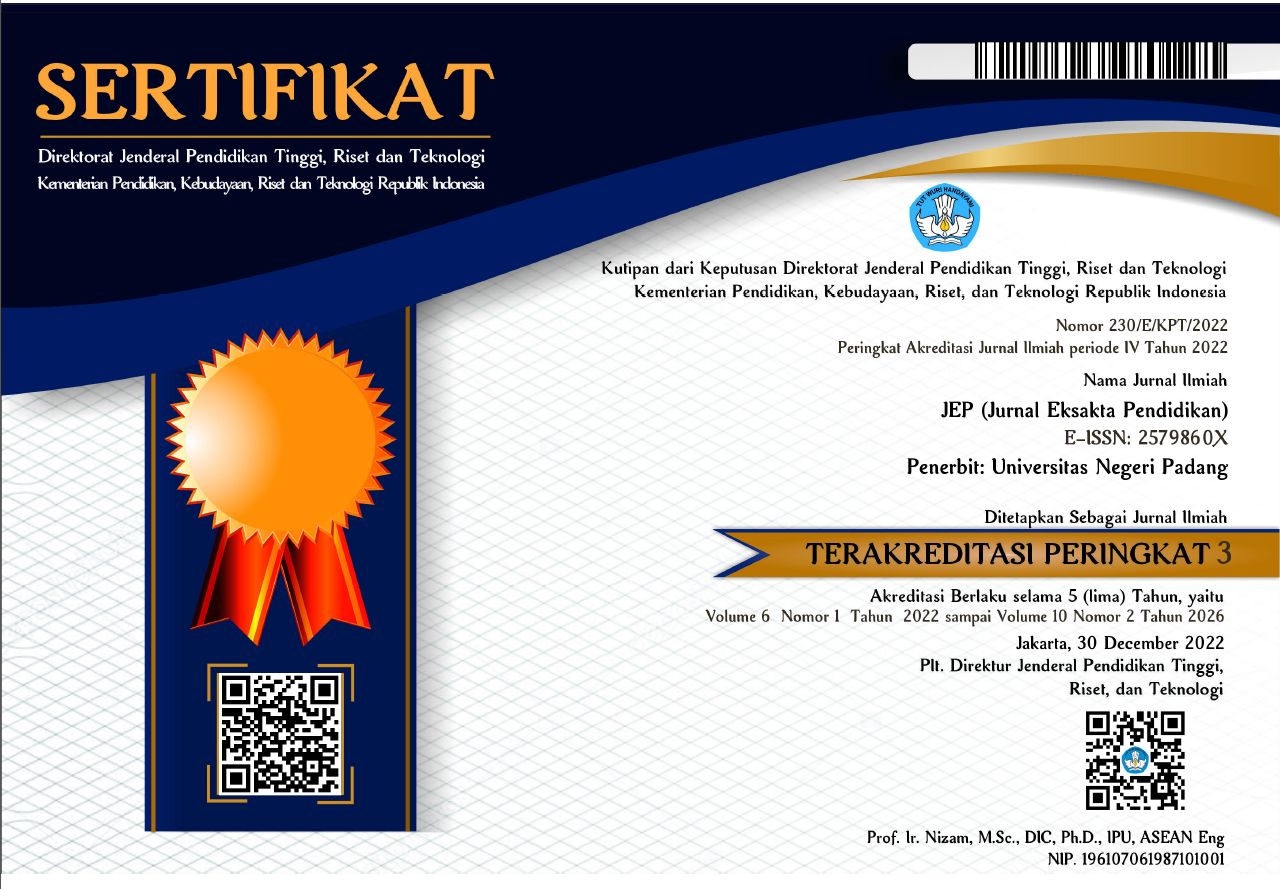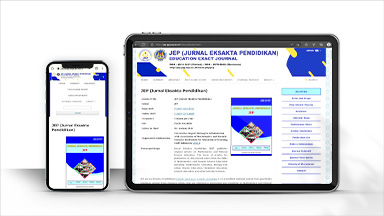Inovasi Metode Pembelajaran: Metode Eksperimen Bauran (Real-Virtual) Berbantuan Software Analisis Video
Abstract
Physics is a subject that consists of concepts related to real life. Empirical phenomena can be observed directly through experimental activities. However, this experimental method is still not optimally applied by teachers in learning. Problems that can be an obstacle in carrying out experiments in schools include difficulties in collecting and analyzing data on some Physics materials, not all schools have adequate practicum tools, and it is difficult to carry out experimental activities in online learning conditions. Based on this, a mixed-methods research was carried out to find a solution to this problem. Qualitative research consisting of literature review about real experimental methods, virtual experimental methods, and the use of video analysis software in physics learning was conducted to obtained innovation on experimental methods. Furthermore, quantitative research was conducted to determine the difference of student’s conceptual understanding before and after being given the intervention. Based on the results of the literature review, it is concluded that the experimental method innovation that can be carried out is the mixed experimental method by combining real and virtual experimental activities. One example of technology that can be used in this method is video analysis software. The results of data analysis showed that there was a difference in concept understanding between before and after given the mixed experimental method. Therefore, the innovation of the learning method can improve students' understanding of concepts in learning Physics.
Downloads
References
Asrizal, Yohandri, & Kamus, Z. (2018). Studi Hasil Pelatihan Analisis Video dan Tool Pemodelan Tracker pada Guru MGMP Fisika Kabupaten Agam. Jurnal Eksakta Pendidikan (JEP), 2(1), 41-48.
Creswell, J., & Plano, C. (2007). Designing and Conducting Mixed Methods Research. Thousand Oaks: Sage.
Ekici, E. (2016). Why Do I Slog Through the Physics?: Understanding High School Students' Difficulties in Learning Physics. Journal of Education and Practice, 7(7), 95-107.
English, V., Crotty, Y., & Farren, M. (2015). The Conversational Framework and the ISE "Baskerball Shot" Video Analysis Activity. Digital Education Review(28), 91-101.
Eshach, H. (2010). Re-examining the Power of Video Motion Analysis to Promote the Reading and Creating of Kinematic Graphs. Asia-Pacific Forum on Science Learning and Teaching, 11(2), 1-28.
Hidayati, Masril, Darvina, Y., & Zakiya, Z. (2019). Efektivitas Lembar Kerja Siswa Virtual Laboratory pada Materi Gerak Lengkung di Kelas X SMAN. Jurnal Eksakta Pendidikan (JEP), 3(1), 47-54.
Hockicko, P., Trpisova, B., & Ondrus, J. (2014). Correcting Students’ Misconceptions about Automobile Braking Distances and Video Analysis Using Interactive Program Tracker. Journal of Science Education and Technologi, 23(6), 763-776.
Jong, T., Lin, C., & Zacharias, C. (2013). Physical and Virtual Laboratories in Science and Engineering Education. Journal Science, 305-308.
Korucu, A., & Alkan , A. (2011). Differences Between m-Learning (Mobile Learning) and e-Learning, Basic Terminology and Usage of m-Learning in Education. Procedia - Social and Behavioral Sciences, 15(1), 1925-1930.
Laws, P., & Pfister, H. (1998). Using Digital Video Analysis in Introductory Mecha nics Projects. The Physics Teacher, 36(5), 282-287.
Masril, Hidayati, & Darvina, Y. (2018). Rancangan Laboratorium Virtual Untuk Pembelajaran Fisika SMA. Jurnal Eksakta Pendidikan (JEP), 2(1), 71-77.
National Research Council. (2000). Inquiry and the National Science Education Standards: A Guide for Teaching and Learning. Washington, DC: The National Academies Press.
Popa, D., Repanovici, A., Lupu, D., Norel, M., & Coman, C. (2020). Using Mixed Methods to Understand Teaching and Learning in Covid 19 Times. Sustainability, 12(8726), 1-20.
Razi, P. (2013). Hubungan Motivasi dengan Kerja Ilmiah Siswa dalam Pembelajaran Fisika Menggunakan Virtual Laboratory di Kelas X SMAN Kota Padang. Jurnal Teknologi Informasi dan Pendidikan, 2(6), 119-124.
Rodrigues, M., & Carvalho, P. (2014). Teaching Optical Phenomena with Tracker. Physics Education, 49(6), 671-677.
Rusman, Kurniawan, D., & Riyana, C. (2013). Pembelajaran Berbasis Teknologi Infor masi dan Komunikasi: Mengembang kan Profesionalitas Guru. Jakarta: Prenada Media Group.
Sudjana, N. (2013). Dasar-Dasar Proses Belajar Mengajar. Bandung: Sinar Baru Algesindo.
Suparno, P. (2007). Metodologi Pembelajaran Fisika Konstruktivistik dan Menyenang kan. Yogyakarta: Universitas Sanata Dharma.
Teiermayer, A. (2016). Problems Based On Phenomena and Experiments in Secondary School Involving a Digital Camera. Physics Education, 51.
Tsai, I., Yeh, C., Wang, Y., & Cheng, Y. (2016). Developing Taiwan Innovative Interac tive Distance Learning Model: Empi rical Studies. ICCSE 2016 (pp. 911-916). International Conference on Computer Science and Education.
Wyrembeck, E. (2009). Video Analysis with A Web Camera. The Physics Teacher, 47(1), 28-30.
Copyright (c) 2022 Hazrati Ashel, Riandi Riandi

This work is licensed under a Creative Commons Attribution 4.0 International License.

This work is licensed under a Creative Commons Attribution 4.0 International License.




_(2579-860X).png)
_(2614-1221)1.png)




